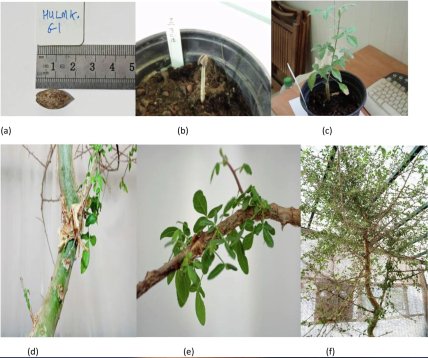As noted in the Bible, scientists discovered a thousand-year-old seed and successfully grew an extinct tree from it (photo).
In the 1980s, scientists discovered seeds from an unknown tree in a cave in the Judean Desert. Despite having been there for around 1,000 years, they managed to bring it back to life.
As of now, the tree has nearly reached three meters in height, allowing scientists to examine it more closely and reveal its identity. The study has been published in the journal Communications Biology.
The tree has been named "Sheba" and is no longer found in nature, although it is mentioned in the Bible.
This previously unknown species of tree belongs to the genus Commiphora and is part of the family Burseraceae. Other plants in this family are well-known for producing non-allergenic aromatic resins, recognized worldwide as frankincense and myrrh. However, no aromatic properties were found in this lost species.
Furthermore, scientists speculate that a substance referred to as "zori" in the Bible was extracted from this tree. This healing resin is mentioned in the books of Genesis, Jeremiah, and Ezekiel.
Analysis of the plant's leaves revealed that they are rich in pentacyclic triterpenoids—compounds known for their anti-inflammatory, antibacterial, and anticancer properties. Additionally, a high concentration of squalene was found, which is often used in skincare.

Researchers believe that the seed from which the tree was grown ended up in a cave in the Jordan Rift Valley near the Dead Sea sometime between 993 and 1202 AD. It is most likely that it was brought there by an animal, such as a small rodent, or by a bird like a dove or turtle dove.
It is also possible that it was hidden by humans to preserve it for better times.
"Since the 'Sheba' seed belonged to a surviving representative of a local species, possibly linked to trade, it may have been considered valuable enough to be intentionally hidden in the cave," say the authors of the study.
As previously reported, scientists have ventured into the depths of Lake Enigma in Antarctica. Despite being located beneath several meters of ice, a thriving ecosystem exists there, one that has never been seen before.